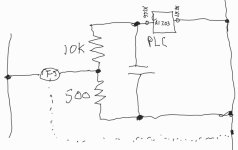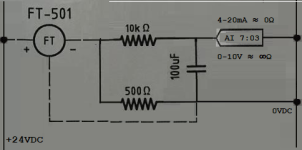Steve Bailey
Lifetime Supporting Member + Moderator
In building a control panel, there are few things I dislike more than having to wire individual components like those shown here. If they are necessary, the manufacturer of the device that requires them should have built them in.
A 2 AM patch, like adding a pull-up resistor to get a sinking proximity switch wired to a sinking PLC input, should only be in place until you can get your hands on the correct prox.
A 2 AM patch, like adding a pull-up resistor to get a sinking proximity switch wired to a sinking PLC input, should only be in place until you can get your hands on the correct prox.




